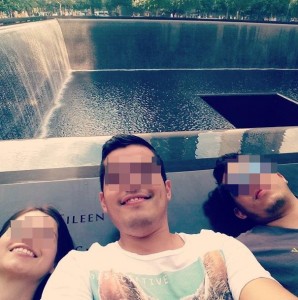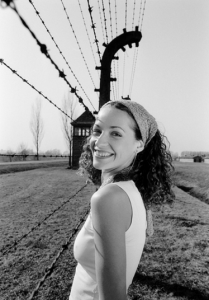“It’s like Berlin. You see the devastation”
This comment by Joel Shapiro referring to his proposal that the World Trade Center site to Berlin in the decades after World War II struck me as odd. Berlin, in its current state, is full of very constructed, very planned new monuments and memorials. Perhaps because of the destruction that served as memorial in the decades after the war, Berlin is a prime example of a city deep in “memorial mania.” From memorials for the Berlin Wall and its victims, to the Memorial to the Murdered Jews of Europe, to memorials of Soviet prison camps, Berlin keeps building new memorials and expanding existing ones. And these sites generate so much revenue. People come to Berlin to see these sites. However, in order to charge people money to remember, you need to build something. The Memorial to the Murdered Jews of Europe is free, but has a museum that charges for various services, such as translation. The Hohenschönhausen memorial to political persecution in the GDR charges admission. Aside from direct revenue from visitors to the memorials, the city profits from tourists travelling to these various points of memorial. This begs the question: what is the purpose of a memorial, especially a memorial as large in scale as these? What should a memorial do to us, as the viewing public? How should we interact with the memorial? Should there be any money exchanged from public to memorial at all? Does your relationship to a memorial change when part of it is monetized?
People will pay to process the memorializing. The World Trade Center Memorial itself is free, but an adult ticket to the museum is $24. I visited the memorial in the spring of 2011 and the museum had not yet opened. Growing up outside of Manhattan, there were kids in my school that lost family members on 9/11. It was one of the most upsetting things to see people taking selfies in front of the reflecting pools. I came with an understanding that there was a very particular way to experience a memorial: to be somber, quiet, and reflective. Even if you had no connection to the people or moment being memorialized, you respected the space in that way, because other people around you might be connected. However, for other people around me at the memorial, it was like any other tourist attraction: something fun and interesting to pose with and then move on quickly to the next spot. The emotional disconnect that I felt between myself and the rest of the public was so intense. Rather than being a space of collective mourning or remembrance, it was a space of individualized consumption. Perhaps I think (or still think) too highly of public spaces of memorial. Maybe for most people, memorials are something to take a picture of, tell your friends you saw it, and move on. Is this because of the public? Or are we consuming memorials this way because the design of them guides us to do so? Or are we consuming memorials because we are paying to see them, directly or indirectly through transportation costs?
My experience at the World Trade Center Memorial influenced my decision not to go to the Auschwitz-Birkenau Memorial. Instead, I stayed in Krakow. While wandering around the city, I came across a giant billboard with a smiling woman in front of the Auschwitz camp. It was advertising an exhibit at the Museum of Contemporary Art in Krakow titled “Poland – Israel – Germany: The Experience of Auschwitz.” This was exactly what I feared most about visiting the Auschwitz Memorial: being part of a collective having an entirely different emotional experience from me. I asked my friend when he returned to Krakow from the Auschwitz Memorial if he saw people taking pictures like the smiling woman. He said that he did and that it added a strange other layer to the experience of remembering to understand how others were engaging with the space. With all of this money spent on memorials, they still do not encourage public remembrance. Most are instead public art projects, like the Memorial to the Murdered Jews of Europe in Berlin and the 9/11 Memorial in New York. Therefore, they should be listed as such and other spaces should be given for public memorials.




